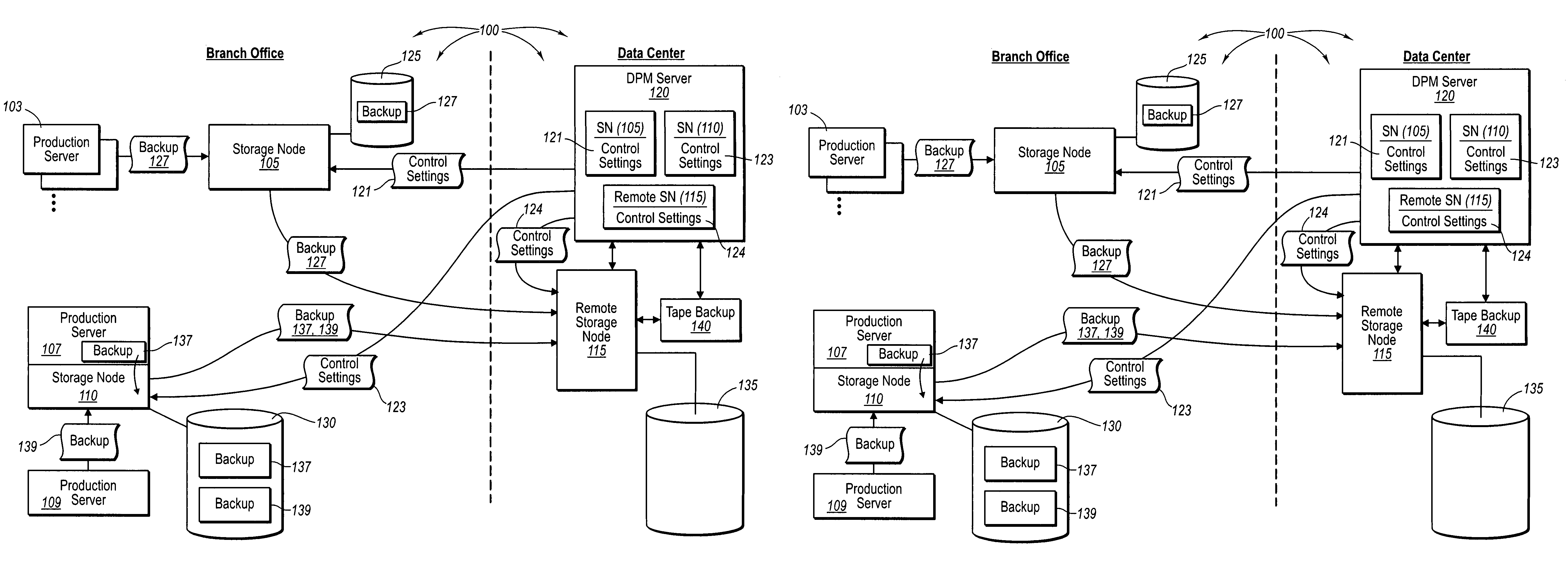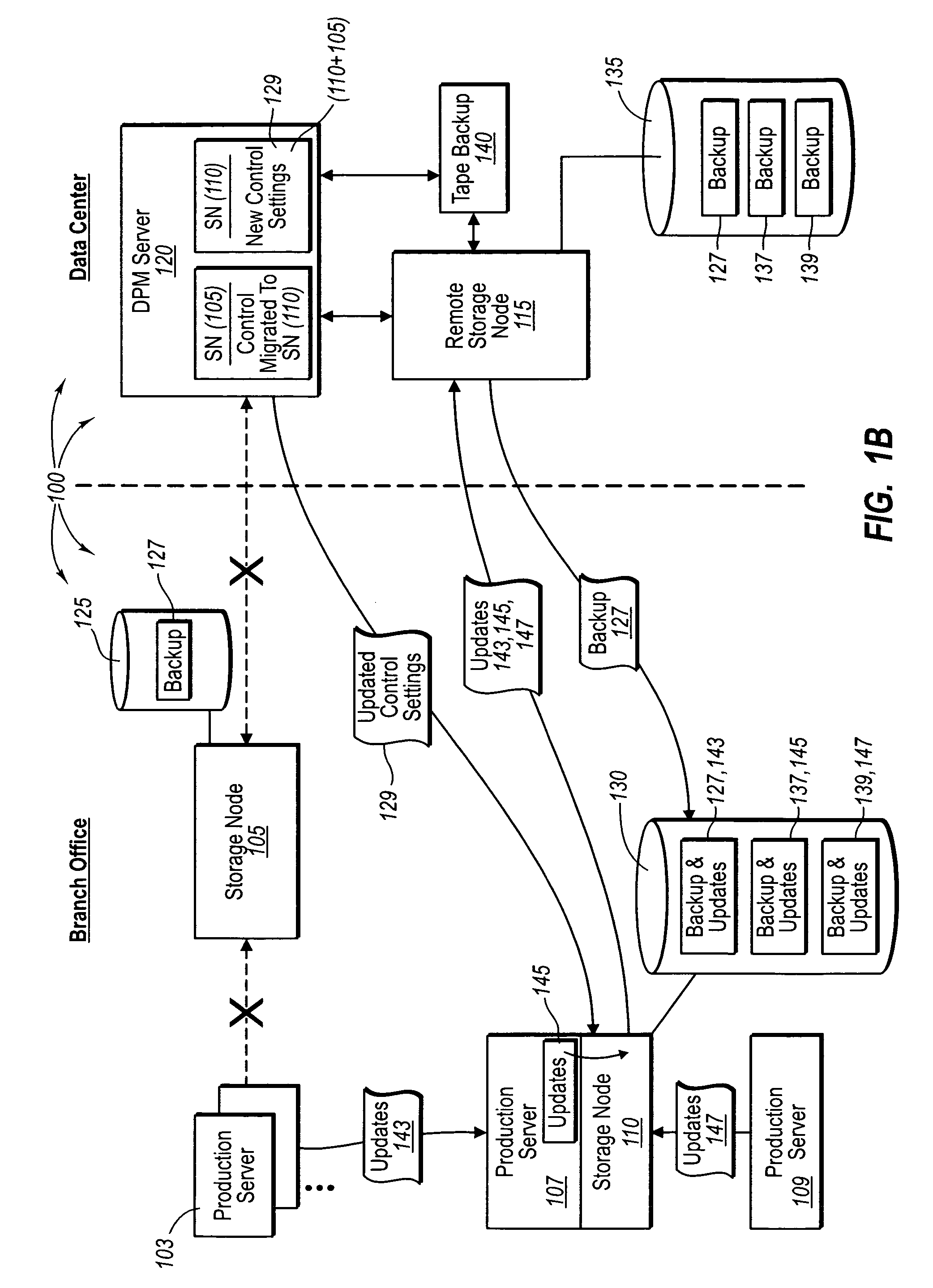Managing backup solutions with light-weight storage nodes
a backup solution and storage node technology, applied in the field of managing backup solutions with light-weight storage nodes, can solve the problems of increasing the administrative overhead of the backup infrastructure, affecting the availability of any given backup (or backup server) in the system, and affecting the availability of any given backup in the system, so as to simplify the backup of one and facilitate the backup of large numbers of production servers
- Summary
- Abstract
- Description
- Claims
- Application Information
AI Technical Summary
Benefits of technology
Problems solved by technology
Method used
Image
Examples
Embodiment Construction
[0018]The present invention extends to systems, methods, and computer program products configured to significantly simplify the backup of one or multiple production (e.g., file, mail, database, etc.) servers. In particular, implementations of the present invention include one or more lightweight, essentially stateless, storage node servers located relatively close in a network location to corresponding one or more production servers. As stateless entities, multiple storage node servers can be easily managed by a single centralized backup server. Furthermore, the geographic placement of the storage node servers allows them to provide relatively quick point-in-time, application-consistent backups of the one or more production servers when needed. Accordingly, an organization can easily backup large numbers of production servers through one or few centralized backup servers.
[0019]In particular, and as will be appreciated more fully from the following specification and claims, a central...
PUM
 Login to View More
Login to View More Abstract
Description
Claims
Application Information
 Login to View More
Login to View More - R&D
- Intellectual Property
- Life Sciences
- Materials
- Tech Scout
- Unparalleled Data Quality
- Higher Quality Content
- 60% Fewer Hallucinations
Browse by: Latest US Patents, China's latest patents, Technical Efficacy Thesaurus, Application Domain, Technology Topic, Popular Technical Reports.
© 2025 PatSnap. All rights reserved.Legal|Privacy policy|Modern Slavery Act Transparency Statement|Sitemap|About US| Contact US: help@patsnap.com



